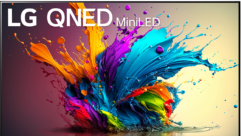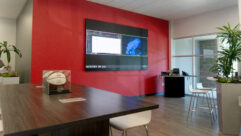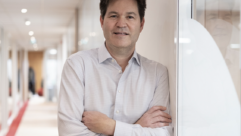Sharp Employs Aggressive Strategy to Lead LCD Market
Oct 16, 2006 12:00 AM
The LCD TV market is about to get a whole lot more competitive. Sharp Electronics has begun production at its second plant in Kameyama, Japan, where the company has committed reasserting its position as the world’s number one provider of LCD TVs by 2010. If history is any indication, the goal warrants attention. Sharp is the same company that in 1998 promised all of its TVs would be LCDs by 2005, and the company came in ahead of schedule on that promise during Q4 2004.
On a press trip to Japan early this month, including a tour of the CEATEC electronics trade show in Chiba and the Kameyama plant in Mie Prefecture, Sharp officials noted that the company’s brand position in the United States is “rather low” relative to where the company believes it should be. Speaking to U.S. reporters, Naoki Katoh, division general manager for the AV Systems group, said Sharp faces severe competition from Sony, Samsung, LG.Philips in LCD, and from Panasonic with its plasma displays.
“We couldn’t produce enough LCDs at the end of 2005,” Katoh says, “and that’s why we slipped from number one in the worldwide market. We made mistakes in projecting demand for the end of 2005 because growth in the U.S. and Canada was bigger than we expected.” Sony was the beneficiary, filling the market gap for demand resulting from industry-wide LCD product shortages, officials said.
The eighth generation Kameyama plant is dedicated to larger LCD screen sizes including 42in., 46in., and 52in. Each 2160mmx2400mm glass substrate can yield eight 46in. panels or six 52in. panels. Currently the plant is said to be producing 500 sheets of mother glass per day, with plans to increase to 1,000 in March 2007, and 3,000 panels per day by next fall.
According to Sharp officials, Samsung and LG’s seventh generation plants can only output six panels per substrate. Sony and Samsung’s joint venture is expected to expand to an eighth generation facility next year. “That means we’ll be able to sleep well for one year,” Sharp’s Katoh says.
Pricing is key to Sharp’s message, with prices for the eighth-gen 1080p TVs coming in at an aggressive $2,499, $3,499, and $4,799, respectively. The company says it will reach those price points through integrated production efficiencies at Kameyama. The plant produces panels, performs testing and handles assembly for all TVs for the domestic market, which reduces costs for shipping and inspection. Panels for the U.S. market are transported to Mexico for assembly.
The Kameyama plant is a model for green design employing photo-voltaic power generators and a fuel cell system said to reduce carbon dioxide emissions by as much as 40 percent over conventional manufacturing facilities. The company boasts that 100 percent of wastewater is recycled for use by the plant, and the plant’s advanced power system is said to produce a third of the electrical power used in-house.
Sharp intends to support its ambitious goal with an aggressive marketing campaign including prominent displays of LCD technology in New York’s Times Square, the Beverly Center in Los Angeles and various sports stadiums throughout the United States. The 12.5’x22′ LCD screen in Times Square will show NBC content as part of a joint deal with NBC Universal.
Sharp also showed prototypes of future products at the annual CEATEC electronics show in Chiba during the first week of October. Among the highlights: an LCD panel with a 10,000:1 contrast ratio that could hit U.S. stores in 2008. Current panels max out at a contrast ratio of 1,500:1. Next year’s models could reach 3,000:1, according to Sharp executives.
And far out on the horizon is a super hi-res display targeted for the broadcast market boasting a contrast ratio of 1,000,000:1. Sharp is talking to studios about the latter as a reference-quality monitor to better reflect the viewing experience of flat-panel TV customers.
Also at CEATEC, Toshiba held select viewings of its nascent SED technology (co-developed with Canon) that’s been billed as the flatpanel successor to CRT. After several years in development, though, SED has yet to realize shipping status while plasma and LCD have entrenched themselves in the market. Toshiba demonstrated a 55in. 1080p SED model with a 50,000:1 contrast ratio, which could ship to the Japan market in Q4 2007, according to Toshiba execs. No plans have been set for the U.S. market.










